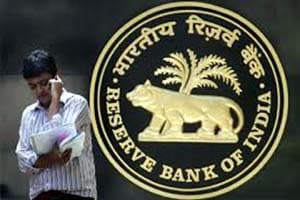RBI Governor Raghuram Rajan’s warning, that the bad loans cycle has not peaked, should come as a surprise only to those who haven’t been following the sector. Indeed, while the earlier set of loans going bad were those of big companies, even small firms with very large exposures are finding their loans looking dicey. A combination of reckless lending—ambitious revenue targets and poor collateral—and poor government performance in terms of making clearances available on time, for land as well as for fuel supplies from PSU-monopolies, made it obvious that NPAs still had a way to go before they peaked. In the case of sectors like electricity, the poor financial condition of most SEBs is the problem; in areas like steel, the collapse in global prices suggests that a lot more loans will get stressed in the months ahead. As a recent Crisil report points out, as much as 40% of assets restructured between 20011 and 2014 have degenerated to NPAs—this is a dramatically higher number than the 15-20% assumed by most while discussing the stress levels in Indian banks. Crisil estimates that around R80,000 crore of stressed loans will get restructured under the new 5/25 rule of RBI during FY16—while it is not clear how much of this will turn bad, the result of the 5/25 restructuring will be further camouflaging of stress levels in banks. And, based on its estimate of loans going bad from earlier restructuring, the credit rating agency estimates NPAs rising by R60,000 crore in FY16, taking the total to R4 lakh crore, or 4.5% of bank advances.
This has various consequences since, in the absence of the government being able to capitalise banks—Crisil estimates they will need R2.6 lakh crore in the next 4 years—PSU banks will grow at a much slower pace than their private counterparts as a result. Crisil says their growth will be around half that of private banks over the next 4 years. This is quite serious and, given its larger implications, the government has to seriously consider privatising several PSU banks.
While there is little that can be done about the loans going bad, the government has to ensure the earlier hurdles, like not having enough debt recovery tribunals, hinder the banks from getting closure on their legal suits. Also, banks have to be encouraged—now that Sebi has changed its rule on converting debt to equity—to take up higher stakes in projects and use this to sell off companies. A good place to begin will be the Dabhol power plant where, till now, the Maharashtra government was not allowing the gas terminal to be hived off and sold. And, as has been seen in the case of the sale of Kingfisher assets, the fight between various government arms—in this case, the taxman and SBI—is only hurting the banks. RBI also needs to move fast to put in place its proposed ceiling on bank exposures to large groups. From around 55% of tier-1 funds right now, the central bank has proposed loans to a single group be limited to 25%—putting this in place is important since the group risk for banks is very high; this will also force companies to move to the corporate bond market. What is unfortunate, however, is that while the group norms are being tightened, banks get more headroom to lend to individual corporate—it is, of course, true that banks also need to exercise prudence, the job cannot be just that of the central bank.
For Updates Check Editorials and Columns; follow us on Facebook and Twitter
